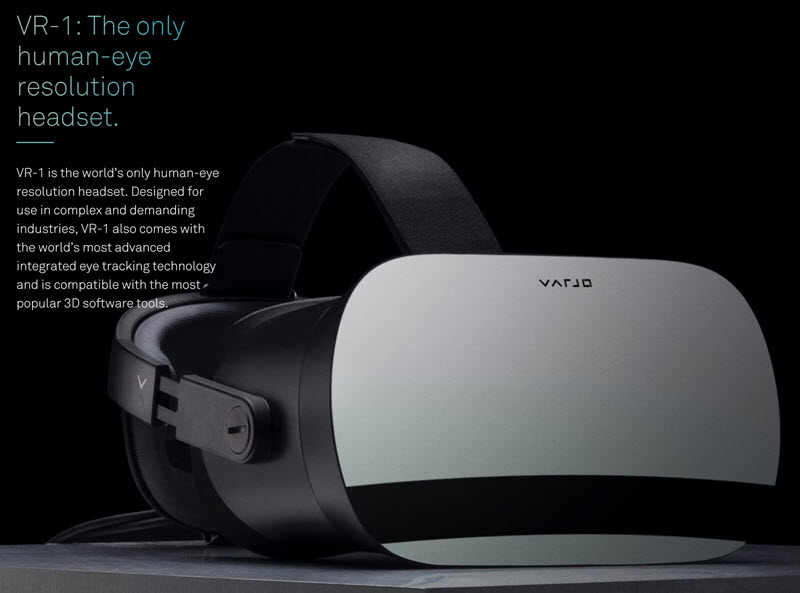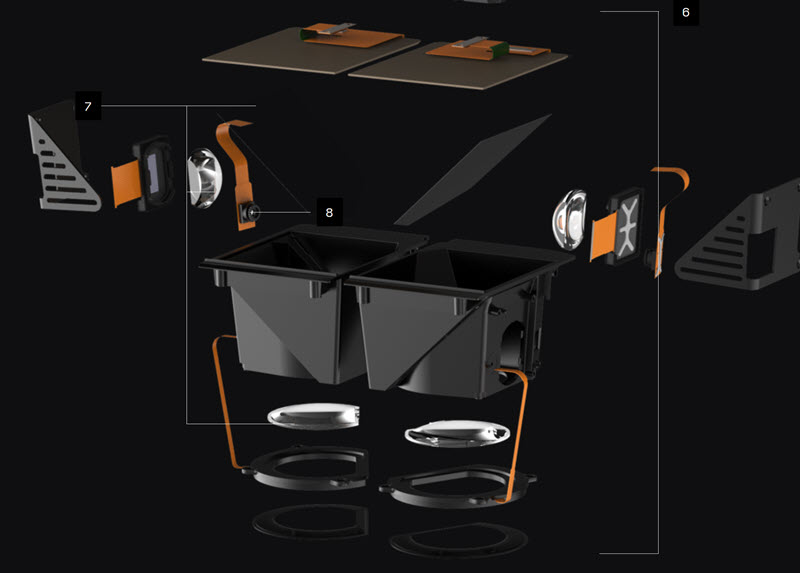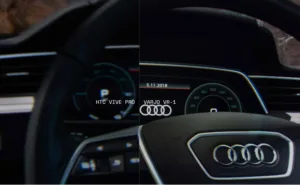In case you still have not heard about Varjo, a Finnish based VR development company it is time to learn more about them. Since June 2017 we have been reporting on their financing and development efforts. In total they closed $46 million in this time span and have shown several prototypes. Now they have gone one step further and put up their first VR headset for sale.

Their biggest reason for noticing them is that they just announced the first VR headset matching the resolution of the human eye. If you have read some of my earlier articles about VR, my main complaint was their limited resolution compared to the real life performance of our vision system. As you know, the human vision system does not have constant resolution but works with variable resolution over the field of view. The center of the field of view has the highest resolution of less than one arc minute. This is matched with the Varjo’s resolution of over 60 pixels per degree.
A simple calculation shows that they cannot do this over the whole field of view as such displays do not exist. In addition this would be a waste of display resolution as the human vision system is far less sensitive in the peripheral regions. This is exactly where Varjo’s technology comes into play.

Instead of using a super high resolution display they developed a technology to superimpose a FullHD micro OLED display over the main display featuring a 1440 x 1600 AMOLED display. The AMOLED display is called a context screen and provides a field of view of about 87 degrees. Both display are low persistence to limit any bad visual effects that might interfere with the human vision system. All of this is to create the sensory input for our peripheral vision. To make it clear, the resolution in the periphery is what many other VR headsets give us as the complete display resolution.
On top of this context screen they superimpose the micro OLED display called a ‘focal screen’ that provides the input for the central part of our vision system. In this part they create a resolution of about 60 pixels per degree. This is what we call 20/20 vision. Varjo is using the term ‘bionic display’ for this setup, creating a word connection to the biological human vision system. Yes there are people with even higher resolution, but they represent only a very small percentage of the people. In other words, most people will view this set up as very realistic.
Superimposing a second display over the context screen, seems straightforward until you realize that our eyes are constantly moving. If the focal screen would just be fixed in the center of the headset it would create a very unnatural viewing experience leading to eye strain and possibly other visual artifacts. Varjo is using eye tracking technology to position the focus screen in the correct position to the eye. This has to happen with high accuracy and very fast. Varjo claims an accuracy of less than one degree and it should position the display within one frame to avoid smearing of the image.
All in all this sounds really great and several testers have said that the results are stunning. I would love to get a test as well, but we have to see if this works out.
Do I see any shortcomings? From a technology standpoint they pretty much pushed the envelope of what is possible today. Using two superimposed display is certainly clever but adds a lot of complexity and space requirements. In the attached image of the exploded view of the display you can see that there are several components that make the headset larger than others and limit the chance to move to a more user friendly form factor.

Anything else to say? Ah, yes the price. As I mentioned before, the headset is available for sale from the Varjo website for a mere €5,995 plus taxes and €995 for a customer success license (whatever that is). At this level it is clear that they are aiming at making the best headset possible and not a headset that a consumer will buy to play some games or watch a movie. The key markets are in the professional field such as design, architecture, training, and military applications. But this is where the VR market is heading for anyway. (NH)
Analyst Comment
I have had the good fortune to have seen the Varjo display a couple of times, at MWC in 2018 and at Augmented World Expo. At MWC, I was a bit concerned about the visual mismatch between the centre and the periphery and there was still some mis-match at AWE. However, the system design and overall ‘mixed reality’ effect at AWE was very impressive indeed. I am hoping to catch up again with the firm at MWC next week.
Last year at MWC, the central detail was good, but the demo did not move the detailed image to match where the eye was looking, so it felt a bit artificial.(BR)

